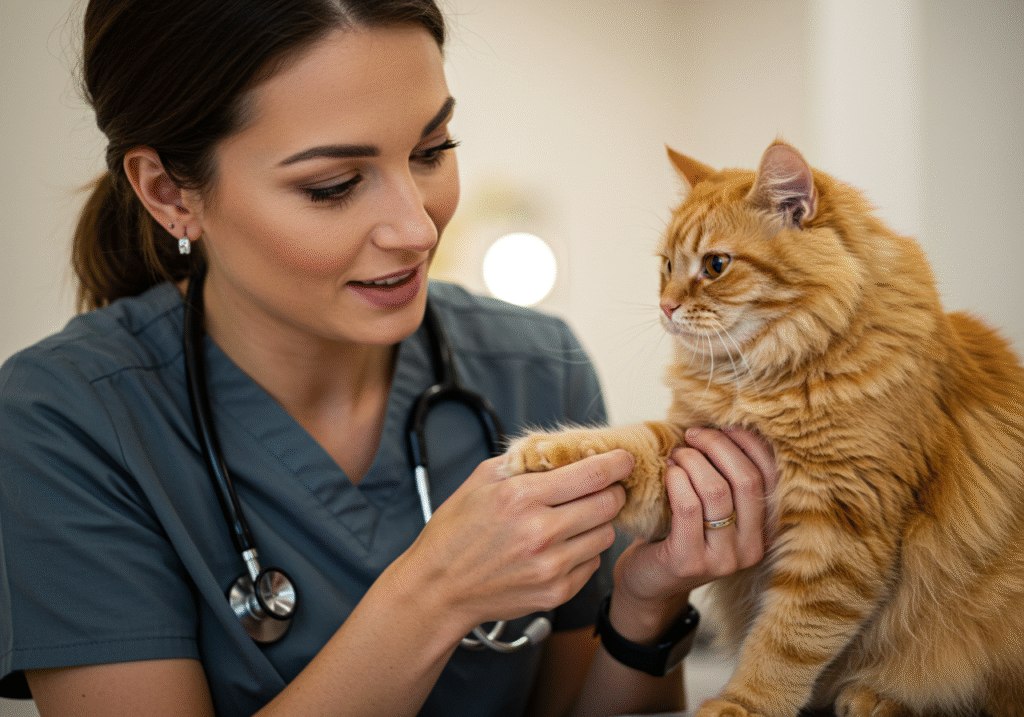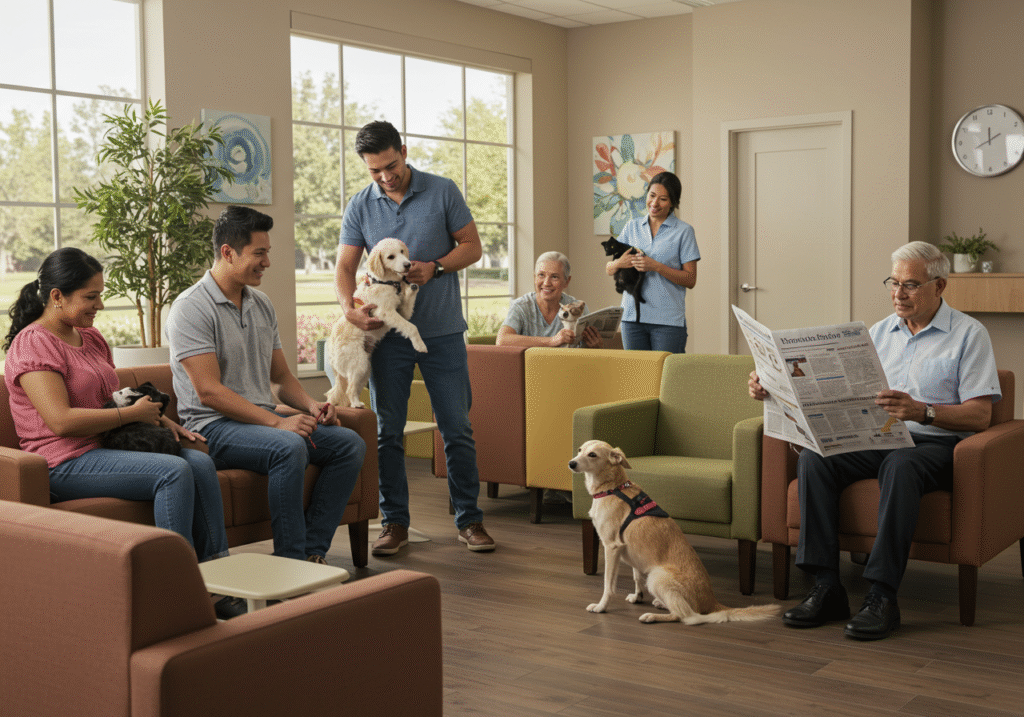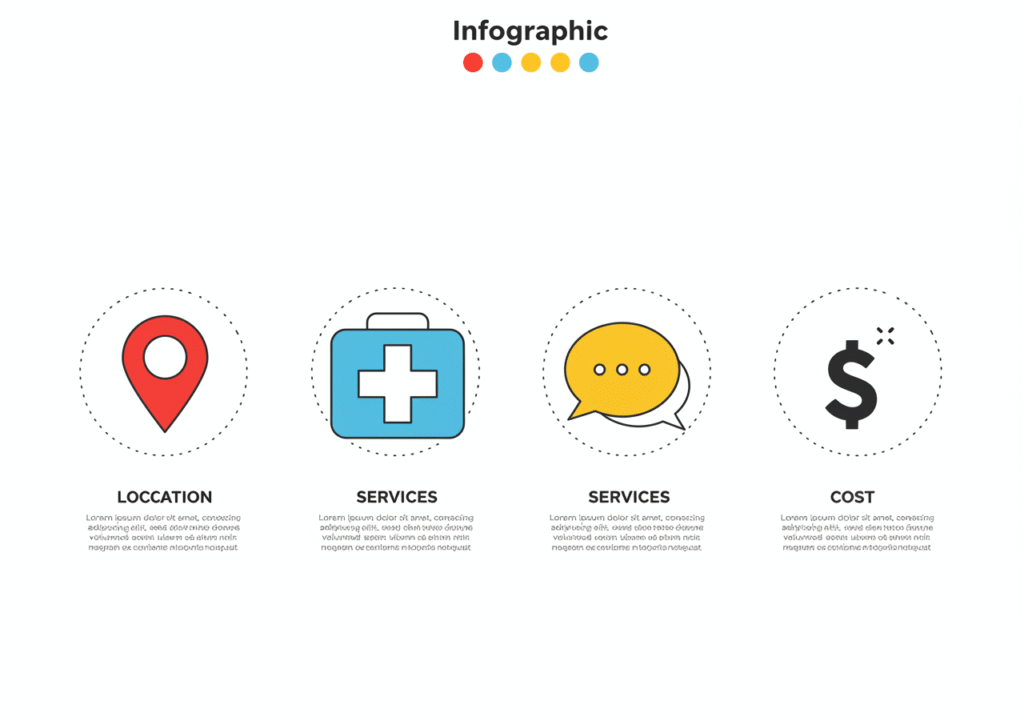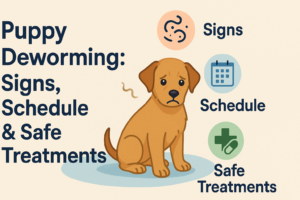Medical Disclaimer: This article is for informational purposes only and does not constitute medical advice. Always consult with a licensed veterinarian for your pet’s health needs.
Table of Contents
Why Your Choice of Veterinarian is a Critical Health Decision for Your Pet
Deciding on a veterinarian goes far beyond a simple “vet close to me” search on your phone. This choice is one of the most important you’ll make for your pet’s entire life. A great veterinarian acts as your co-pilot, navigating everything from the excitement of a new puppy or kitten to the complexities of senior care. They are your first call for both emergencies and routine questions.
From my years in practice in Ottawa, I’ve seen firsthand how a strong, trusting relationship between a pet owner and a vet clinic can change outcomes. When owners feel heard and respected, they’re more involved in their pet’s care. This partnership is built on good communication and shared decision-making, which is the cornerstone of great veterinary medicine. Learning how to choose a veterinarian is the first step in building that essential foundation for a long, healthy, and happy life for your pet.
2. Verify Credentials and Expertise
Once you have a shortlist, the next step in how to choose a veterinarian is to confirm they have the right qualifications. In Canada, every practising veterinarian must be licensed by their provincial regulatory body, ensuring they meet strict standards of practice.
- Look for the DVM: The letters “DVM” (Doctor of Veterinary Medicine) or “VMD” after a veterinarian’s name signify they have graduated from an accredited veterinary college. This degree requires years of rigorous academic and clinical training. As a vet in Ontario, I am licensed by the College of Veterinarians of Ontario (CVO), and every province has its own equivalent body. You can usually find this information on the clinic’s website.
- Consider Your Pet’s Needs: Most veterinarians are general practitioners, similar to a human family doctor. They are skilled in handling a wide range of medical issues, from wellness exams to common surgeries. The scope of veterinary medicine is vast; resources like the Merck Veterinary Manual cover thousands of diseases across many species, highlighting the incredible amount of knowledge required.
- Ask About Special Interests or Certifications: If your pet has specific needs—like a senior cat with kidney disease, a dog with severe allergies, or if you own an exotic pet like a rabbit or reptile—ask if any vets at the clinic have special training or a particular interest in that area. Some may have advanced certifications or be board-certified specialists, which is crucial for complex cases.
Confirming credentials is a fundamental part of the process. It’s the best way to ensure your pet will be in capable and professional hands, which is a key goal when figuring out how to choose a veterinarian.
3. Evaluate Location and Services
Practicality plays a huge role in how to choose a veterinarian. The best vet in the world isn’t helpful if you can’t get to them when you need to. Think about both routine visits and potential emergencies.
- Location, Location, Location: A clinic that is close to your home or work makes a big difference. I’ve had clients who chose our Ottawa clinic because it was on their daily commute, making it easy to drop off their dog for a dental procedure in the morning and pick them up after work. During an emergency, a shorter drive time means less stress for both you and your pet and faster access to critical care.
- Hours and Emergency Care: Check the clinic’s operating hours. Do they offer any evening or weekend appointments? More importantly, ask what their protocol is for after-hours emergencies. Many clinics, like my own, partner with a dedicated 24/7 emergency hospital for overnight and holiday care. Knowing this information before you need it is a crucial part of how to choose a veterinarian. Make sure that number is saved in your phone.
- In-House Services: A clinic that offers a broad range of services under one roof can save you time and stress. Find out what they can do on-site. Key services to ask about include:
- Diagnostics: Do they have an in-house lab for bloodwork, or is it sent out? Do they have digital X-ray or ultrasound equipment? Faster diagnostics mean faster treatment.
- Surgery: Are routine surgeries like spays, neuters, and dental cleanings performed on-site?
- Pharmacy: Can you fill prescriptions at the clinic, or will you need to go elsewhere?
A well-equipped clinic provides convenience and continuity of care, which are vital factors when deciding how to choose a veterinarian.

4. Schedule a Clinic Visit and Tour
Reading reviews and websites is a great start, but nothing beats seeing a clinic for yourself. This is one of the most revealing steps in how to choose a veterinarian. Call ahead and ask if there’s a quiet time of day when you could pop in for a brief tour. A clinic that is proud of its facility and team will almost always be happy to show you around.
During your visit, be observant. Use your senses to get a feel for the place:
- Check for Cleanliness: Is the waiting area tidy and clean? Does it smell fresh, or is there a strong odour of chemicals or animal waste? A clean environment is a basic but non-negotiable sign of a well-run practice. In my experience, a team that prioritizes a clean and organized space often applies that same level of diligence to their medical work.
- Observe the Atmosphere: Does the clinic feel calm and organized, or chaotic and stressful? Pay attention to the reception staff. Are they welcoming, polite, and attentive, even if they are busy? The front-desk team is the heart of the clinic; their attitude can tell you a lot about the workplace culture.
- Watch Pet-Person Interactions: How do the staff members interact with the pets and owners in the waiting room? Look for signs of compassion and patience. Do they greet the animals or seem stressed by their presence?
This visit is your chance to see if the clinic feels like the right fit for you. Trust your instincts. If a clinic refuses to let you see beyond the waiting room or if something just feels off, that’s important information. Making an in-person assessment is a critical part of learning how to choose a veterinarian you can truly trust.

5. Assess Communication Style and Relationship
The right technical skills are essential, but the ability to communicate with empathy and clarity is just as important. The relationship between you, your vet, and your pet is a partnership. A key part of how to choose a veterinarian is finding someone you feel comfortable talking to.
- Do They Listen? During your first interaction, whether it’s a phone call or a visit, do you feel heard? A great veterinarian will take the time to listen to your concerns without interrupting or making you feel rushed. I always tell my clients, “You know your pet better than anyone.” A vet should see you as a key partner in your pet’s healthcare.
- Can They Explain Things Clearly? Medical topics can be complex. A good vet should be able to explain a diagnosis, treatment options, and preventive care in simple, understandable terms, avoiding overly technical jargon. They should welcome your questions and provide clear answers. If you leave a conversation feeling more confused than when you started, that’s a red flag.
- Observe Their Interaction with Your Pet: If you bring your pet for an initial meet-and-greet, watch how the veterinarian and technicians approach them. Do they get down on the floor with a nervous dog? Do they speak in a calm, reassuring tone? Do they try to make the experience as positive as possible? A little bit of compassion goes a long way in making vet visits less stressful for everyone.
This focus on communication is vital. You need to be able to trust your vet’s advice, especially in a crisis. The process of how to choose a veterinarian should prioritize finding a team that makes you feel respected, understood, and empowered in your pet’s care.

6. Understand the Clinic’s Approach to Care (Spectrum of Care & Fear Free)
A clinic’s underlying philosophy on how it delivers care can significantly impact your experience. Two important concepts in modern veterinary medicine are the “Spectrum of Care” and “Fear Free” handling. Asking about these during your search is a sophisticated way of figuring out how to choose a veterinarian who is both progressive and compassionate.
- Spectrum of Care: This is a practical and ethical approach to medicine. It means the veterinarian presents a range of treatment options, not just the “gold standard” that might be financially out of reach. For example, for a fractured tooth, options might range from extraction (most affordable and practical) to a root canal (more complex and expensive). A clinic committed to this model will work with you to find a solution that is medically appropriate for your pet and financially manageable for you. It’s about collaboration, not judgment.
- Fear Free Handling: Vet visits can be terrifying for many animals. The Fear Free Pets initiative provides training and certification for veterinary professionals on how to reduce fear, anxiety, and stress in their patients. A Fear Free certified professional uses techniques like offering treats (with your permission), using non-slip mats on exam tables, and minimizing stressful handling. I’ve seen the difference it makes; a calm pet is easier to examine thoroughly and has a much better experience. When you’re considering how to choose a veterinarian, asking “Is your team Fear Free certified?” shows you prioritize your pet’s emotional well-being.
A clinic that embraces these principles demonstrates a commitment to providing accessible, high-quality care while also protecting your pet’s emotional health. It’s a sign of a modern, empathetic practice.
7. Inquire About Costs and Payment Policies
Talking about money can be uncomfortable, but it’s a necessary and responsible part of how to choose a veterinarian. A reputable clinic will be transparent and upfront about their costs and payment policies. Understanding this from the beginning helps prevent surprises and financial stress down the road.
- Ask for a Price List: Most clinics have a standard price list for routine services like wellness exams, vaccinations, and parasite prevention. Don’t be shy about asking for these prices. This will help you compare costs between different clinics and understand what to expect for regular visits.
- Inquire About Estimates: For non-routine procedures, such as dental work or surgery, it’s standard practice for a clinic to provide a detailed written estimate beforehand. This estimate should break down the costs so you know exactly what you are paying for. A good vet team will walk you through the estimate and explain each charge.
- Discuss Payment Options: Ask what payment methods they accept. Do they offer payment plans for larger bills? Do they work with third-party financing like Petcard? Also, ask about their policy on pet insurance. Most clinics will work with any insurance provider, but you are typically required to pay the bill upfront and then submit a claim for reimbursement.
Being proactive about finances is a smart move. A clinic that is open and clear about costs demonstrates professionalism and respect for its clients. This financial transparency is a crucial final check in the process of how to choose a veterinarian.

Typical Canadian Vet Costs: What to Expect
Veterinary costs can vary significantly depending on your location in Canada, the type of clinic, and your pet’s specific needs. The table below provides a general estimate for common services to give you a baseline. These prices are illustrative and you should always confirm costs directly with your chosen clinic.
| Service | Typical Cost Range (CAD) | Notes |
| Annual Wellness Exam | $70 – $120 | Exam only. Does not include vaccinations or other tests. |
| Core Vaccinations (Dog) | $80 – $150 | Often bundled in the first year, then given every 1-3 years. |
| Core Vaccinations (Cat) | $80 – $150 | Includes core vaccines like FVRCP. Rabies may be separate. |
| Dental Cleaning (No Extractions) | $500 – $1,000+ | Price is highly variable and requires general anesthesia. |
| Spay (Dog) | $400 – $900+ | Cost depends heavily on the dog’s size. |
| Neuter (Dog) | $350 – $700+ | Less complex than a spay, cost depends on size. |
| Emergency Visit (Exam Fee) | $150 – $300+ | This is the fee just to be seen; treatments are additional. |
Home-Ready Checklist: 5-Minute Prep for Your First Vet Visit
A little preparation can make your first visit smoother and more productive. It helps your veterinary team get a complete picture of your pet’s health from day one.
- Gather All Medical Records: If you have records from a previous vet, breeder, or shelter, bring them with you. This includes vaccination history, past illnesses, and any medications your pet is currently taking.
- Make a List of Questions: In the moment, it’s easy to forget what you wanted to ask. Write down your questions about food, behaviour, exercise, or anything else on your mind about how to choose a veterinarian and their approach.
- Note Your Pet’s Diet and Medications: Be ready to tell the vet the specific brand of food your pet eats, how much, and how often. Do the same for any medications, supplements, or flea/tick preventatives.
- Bring a Fresh Stool Sample: Many clinics will want to run a fecal test to check for intestinal parasites, especially for a new puppy or kitten. Call ahead to see if they recommend this.
- Prepare Your Pet: For everyone’s safety and comfort, make sure your dog is on a secure leash and your cat is in a sturdy, well-ventilated carrier.
The Future is Here: Modern Veterinary Trends
The field of veterinary medicine is constantly evolving, with new technologies and approaches changing how we care for our pets. When you’re thinking about how to choose a veterinarian, it’s helpful to know which clinics are embracing these modern trends to provide more convenient and comprehensive care.
Veterinary Telemedicine
One of the biggest recent shifts has been the rise of veterinary telemedicine. This doesn’t replace the need for in-person exams but serves as a powerful tool for specific situations. Telemedicine allows you to consult with your veterinary team remotely via phone, video call, or a dedicated app.
From my own experience, it’s incredibly useful for things like:
- Post-surgery follow-ups to check on an incision without the stress of a car ride.
- Minor skin issues where I can assess a rash from a high-quality photo.
- Behavioural consultations for issues like separation anxiety.
- Triaging non-urgent issues to decide if an in-person visit is needed.
The Canadian Veterinary Medical Association (CVMA) has established guidelines to ensure telemedicine is used responsibly, emphasizing that it must exist within an established vet-client-patient relationship. Asking a potential clinic if they offer telehealth services is a great way to gauge how they are adapting to modern pet owner needs. It shows a commitment to accessibility and convenience, which is a valuable trait when you choose a veterinarian.
Conclusion: Partnering for a Lifetime of Health
Choosing the right veterinarian is about finding a trusted partner who will be there for you and your pet through every stage of life. It’s a decision that goes beyond convenience and cost; it’s about finding a medical team whose expertise, communication style, and philosophy of care align with your own. By following these 7 steps, you can move confidently from a broad search of “vets near me” to selecting the perfect clinic.
I’ve seen countless times how a strong, collaborative relationship between a pet owner and their veterinary team leads to better health outcomes. It creates a space where you feel comfortable asking questions, confident in the medical advice, and empowered to make the best decisions for your furry family member. The process of how to choose a veterinarian is your first, most important step in building that partnership for a long, healthy, and happy life together.
Frequently Asked Questions (FAQs)
How can I tell if a vet is truly good with animals?
Look for a clinic that practices Fear Free techniques. A great veterinarian and their team will get down on your pet’s level, use gentle handling, and offer treats to create a positive association. During your first visit, observe how they approach your pet—a compassionate team will prioritize your pet’s emotional well-being, not just their physical health.
What’s the best way to find a vet I can trust?
Start by asking for recommendations from friends, family, and other pet professionals like groomers. Once you have a shortlist, do a quick online search and schedule a visit to the clinic. The best way to learn how to choose a veterinarian you trust is to meet them and see how they communicate and run their practice.
How much should I expect to pay for a vet visit in Canada?
A standard check-up or wellness exam in Canada typically costs between $70 and $120. This fee covers the physical exam itself. Vaccinations, medications, or any additional testing will be extra. Costs can vary based on your city, so it’s always a good idea to call the clinic and ask about their fees for routine services.
What should I do if my vet’s recommendation is too expensive?
Don’t be afraid to talk about your budget. A good veterinarian understands that finances are a real concern and will practice a “Spectrum of Care” approach. Ask them, “Are there other treatment options we can consider?” They should be willing to discuss alternatives that are still medically sound but may be more affordable for you.
Do I really need to visit a clinic before deciding?
Absolutely. A visit tells you more than any website or review can. It allows you to see if the clinic is clean, observe how the staff interacts with pets and people, and get a general feel for the atmosphere. This is a critical step in how to choose a veterinarian and ensures you find a place where both you and your pet feel comfortable.





Pingback: 7 Toxic Fungi & Can Dogs Have Mushrooms?
Pingback: 7 Essential Facts About IMHA in Dogs: A Vet's Trusted Guide